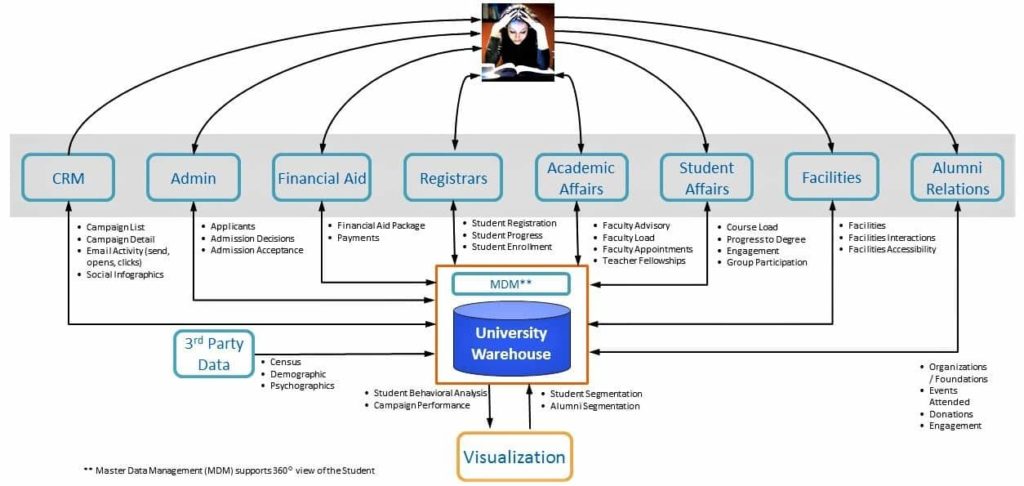Student Life-cycle at HEDW Conference —

On April 23rd – 26th, CTI is once again sponsoring the Higher Education Data Warehouse conference. Last year at the conference we introduced the concept of the “Student Lifecycle” to drive recruitment, retention and success. The impact of analytics is driving improvements in University performance across a broad spectrum, consider the following:
- Improving student recruitment, enrollment, and student success
- Improving alumni engagement and donor fundraising
- Improving facilities operations and efficiency
- Improving financial aid and grant management
- Improving faculty planning and learning management
- Improving University financial administration and HR administration
Wow! Imagine for a moment if you could move the needle just a few degrees in any of these areas – Pause at this line-up and think of the possibilities at your institution. I’ll give you a few for instances. What if analytics could pin point at-risk students? Or draw attention to buildings systems that have reached a point where ongoing maintenance is about to exceed the cost of replacement? Or more effectively align grant spending to academic and research outcomes? Or spot light supplier expenses that are on a trajectory to exceed budgets?
And, for those of you who occupy the world of academic teaching hospitals, I’ll throw another opportunity at you:
• Improving the intensive process of LCME accreditation by demonstrating compliance with LCME metrics.
Our work with the Higher-Ed community has shown us how similar it is to other “industries” when it comes to the critical issues that sabotage success:
- Data quality problems are left to live on as a problem
- Lack of clarity in key business definitions is discounted (eg. what defines an “enrolled student”)
- Data security is considered too late
- Inadequate business process investigation
- User adoption is an afterthought
You’ll note I make no mention of the technical disciplines. What about good data architecture? Or data process integration? Or business rule realization? Or end-user delivery approaches? Nor do I mention the technology landscape: be it visualization tools, data management tools, glossary tools, testing tools, physical environment strategies. Well, you guessed right, they are just as critical to success. But the mistake is people (and here I mean project leadership) miss the perspective that these disciplines are necessary for success, but not sufficient. You can do all this hard work, even do it really well (which is no mean feat), and still fail.
So take a moment and re-read the earlier list. They are all characterized as organizational challenges. Make sure you have them on your radar at the onset of your project. And, most important, don’t let them bog you down or create paralysis. Run your project as an evolving process of realization through continuous understanding, engaging, proving, compromising, and delivery – the art to the science, you might say.
At this year’s HEDW conference in Arizona I will be mingling and meeting as many people as possible to get their take on where analytics is having an impact, and the success factors they have developed to pull it off. If by chance you are coming to the conference in Arizona, do come and say hello and share some war stories with me. And when I return, I’ll report back in another blog some of the observations from this year’s conference.
‘Till then…
Kurt.